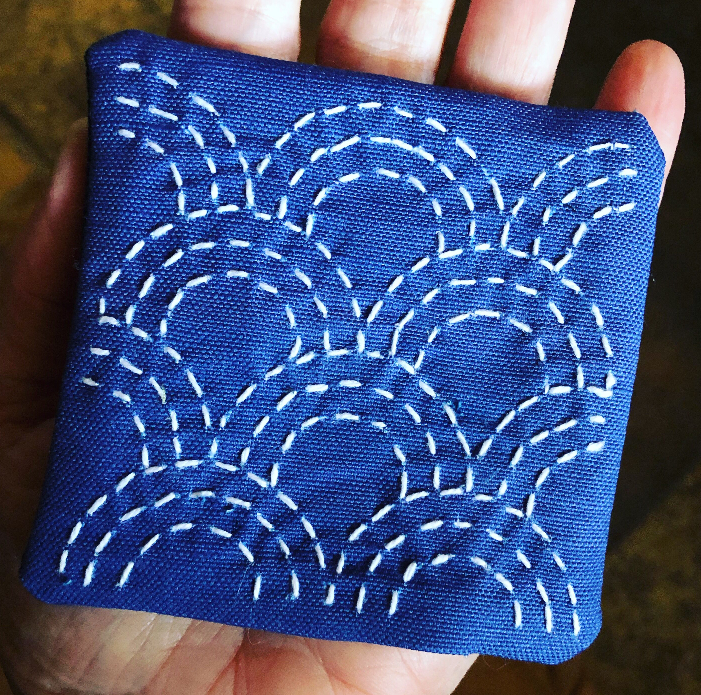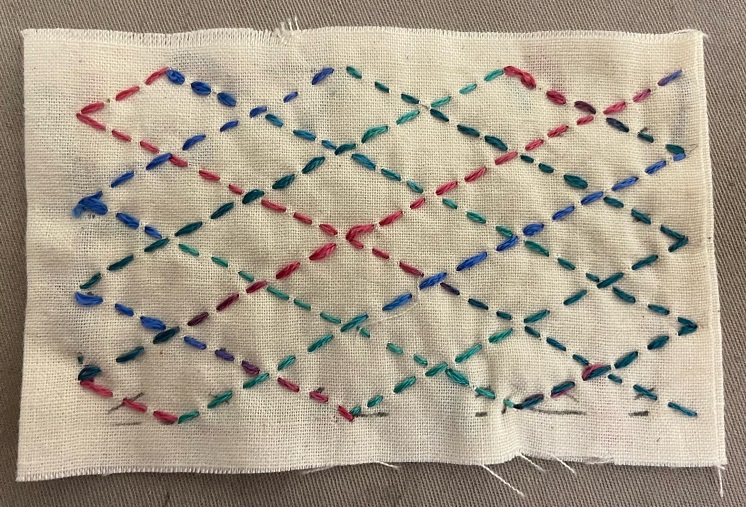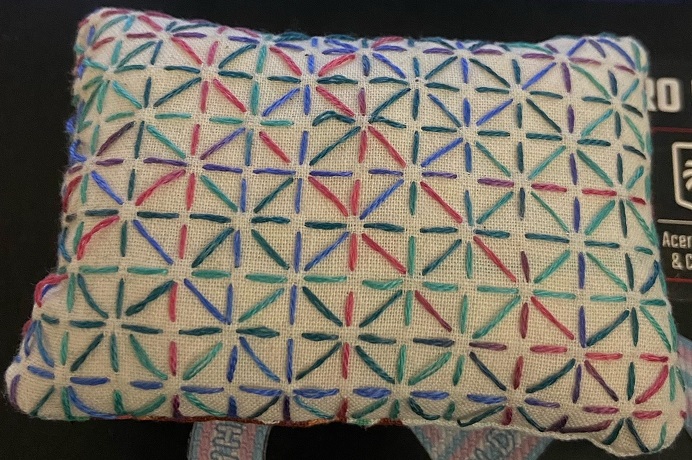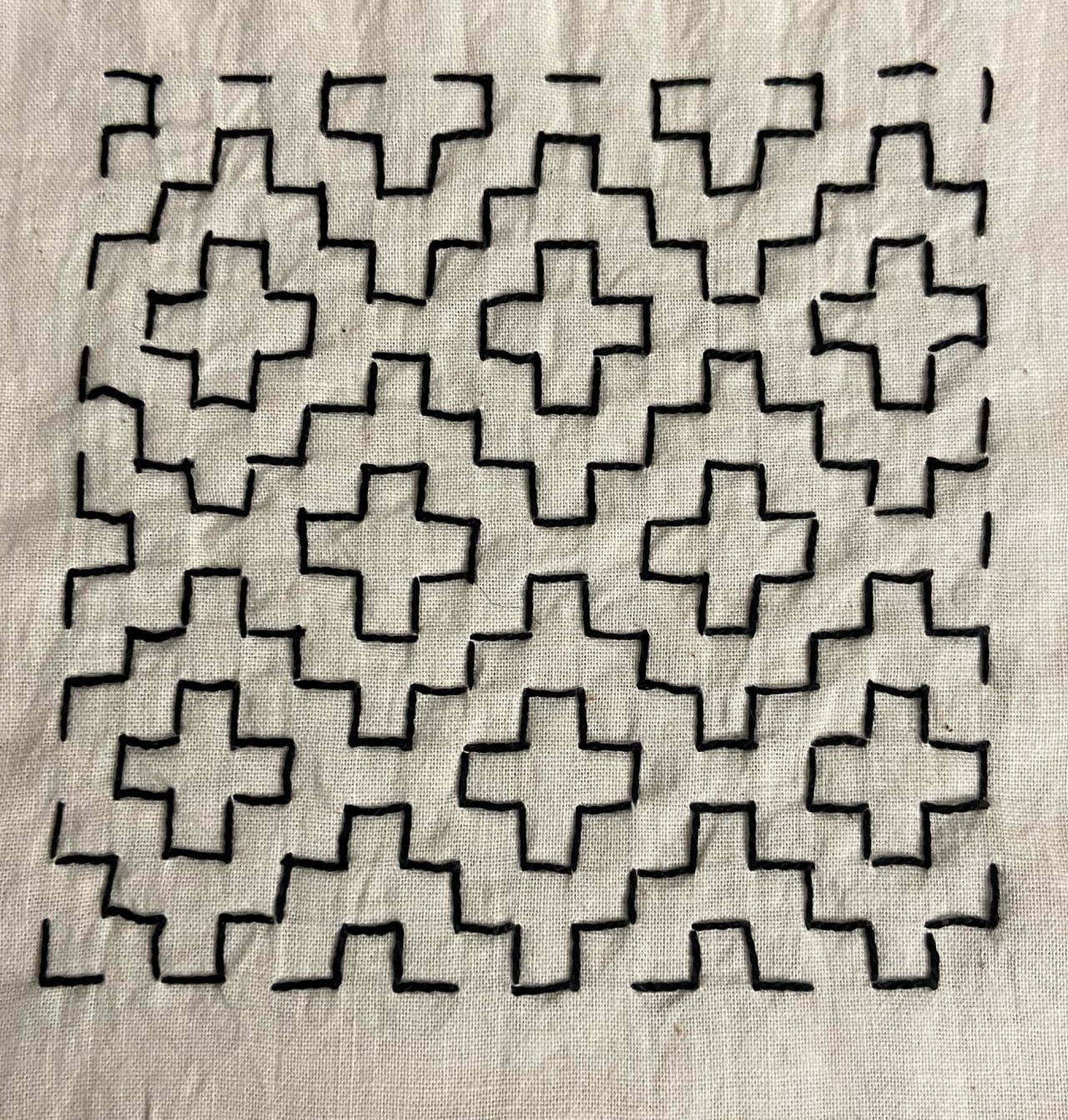Adventures in Sashiko

I recently developed an interest in the Japanese embroidery style known as sashiko. This beautiful, yet practical method of embroidery appears to have originated in poor areas of northern Japan. Cotton was too expensive for the people there to afford, and wool was unknown, so people made clothes out of linen, ramie, and other plant fibers. To keep their clothes warm and to patch tears and threadbare spots, these people would sew layers of fabric together using sashiko. The large amount of thread used not only strengthened the fabric but also provided extra insulation against the winter cold.
My own sashiko journey started by watching YouTuber The Green Wrapper. Like her Japanese grandmother before her, she focuses on sashiko as a way to save old fabrics by mending and by making zokin (cleaning cloths) out of worn-out clothing. This is both frugal and good for the environment, as far too much clothing ends up in landfills in our fast-fashion era.
If you are planning to learn sashiko, I strongly recommend the following:
- Address the medium with respect to its cultural origin and practical spirit. Use waste fabric whenever possible for practice. I personally used layers of muslin, since I have a fair bit of it lying around from when I used to sew my own Renaissance Faire garb.
- Learn from actual Japanese people whenever possible. Some Youtubers to get you started are Sashikonami and Sashiko Story.
- If you can use actual sashiko thread, then do so, but if you don't have access, or while you're waiting for it to arrive, you can use embroidery thread. I did.
- If you can't get your hands on a sashiko needle, then use the longest darning or upholstery needle you can find. Remember, the needle is supposed to be braced against your palm.
- You will need a special thimble to do sashiko without hurting your hands. The Green Wrapper has a video on how to make your own, if you can't get the fancy metal or leather ones from Japan.
- If you're using a specific pattern, then making a grid or drawing out your pattern on the fabric is pretty much necessary. Use markers or pencils that wash out. (Heat-erasing pens, such as Frixion, can be washed out instead of ironing! Game-changer!!)
- Remember that I am not Japanese. Actual Japanese people's advice is always better to follow than my own if it contradicts mine.
- Remember that, as a non-Japanese person, you will never "understand" sashiko as well as native Japanese people because, like me, you lack some of the cultural context. And that's okay. As long as you are willing to learn, and respectful towards the culture, you're probably not appropriating it.
Pictures of my own sashiko practice will go at the bottom of the page, so that this essay grows over time. I plan to make several projects out of waste fabric and to use sashiko as a form of visible mending, as it was in its original cultural context.

My first attempt at sashiko. I did it wrong; the thread isn't supposed to cross the intersections of the gridlines.

My second attempt, which I made into a pincushion. My only issue with this one isn't visible; my longest darning needle isn't quite long enough to brace against my palm, so the stitches weren't done exactly the right way. Still, it looks good and I'm proud of it.

Attempt 3, again on muslin. This is a variant of the persimmon-flower pattern, in black pearl thread.